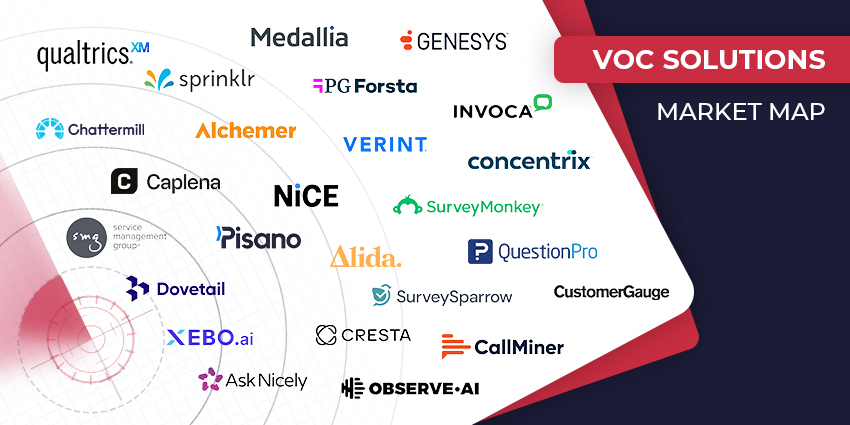Customer loyalty is more than a marketing metric; it’s an operating strategy. The days of running generic rewards schemes and hoping for repeat business are over. Today, customer loyalty management has become one of the most valuable, and under-leveraged, pillars of customer experience at the enterprise level.
A loyal customer isn’t just someone who comes back. They spend more. Stay longer. Recommend faster. They open emails, tolerate hiccups, and ignore your competitors’ ads. They’re also far cheaper to retain than any lead your sales team is chasing right now.
Loyalty isn’t a lucky break. It’s the outcome of moments that go right consistently, and often quietly. A first experience that flows without friction. A support interaction that resolves more than just the issue. A product that keeps its promise. Each of these moments builds equity in the relationship.
When those touchpoints connect across teams, systems, and time something stronger than repeat business takes shape. Customers begin to trust. They stick around, not because it’s the easiest option, but because the experience earns it.
What is Customer Loyalty?
Customer loyalty reflects a decision: the conscious choice to stay with a brand when alternatives are just a click away. It’s not just about satisfaction, plenty of satisfied customers churn. Loyalty runs deeper. It’s emotional, earned through consistency, value, and trust built over time.
In practical terms, loyalty shows when customers return after a poor experience, because they believe it’s the exception, not the norm. It shines when existing buyers refer peers, opt into updates, or upgrade without needing a discount.
But for enterprises, this isn’t a soft metric. It’s measurable, in retention rates, customer lifetime value, and referral growth. In fact, increasing customer retention by just 5% can boost profits by 25% to 95% depending on the industry. Loyalty doesn’t just pay off; it compounds.
Now, it matters more than ever. With CX as a key battleground, loyalty becomes a lead indicator of business resilience, and a hedge against rising acquisition costs.
The ROI of Customer Loyalty
Customer loyalty used to be a feel-good metric. Now it’s a board-level priority.
Retaining a customer isn’t just cheaper than winning a new one, it’s smarter. The cost of acquisition has spiked over 60% in the last five years, especially across digital channels. Meanwhile, repeat customers spend more, refer faster, and support brands longer, even when things go wrong.
The return is measurable:
- CAC Down, Margins Up: Brands with strong loyalty programs don’t need to outspend rivals on ads. Their customers come back organically. Acquisition costs are up to 7x higher than retention costs, and rising. Loyalty brings those numbers down.
- Predictable Revenue: Returning customers are more consistent. They know the product, trust the brand, and often skip the comparison stage altogether. That makes forecasting easier, pipelines more stable, and marketing spend more efficient.
- Loyalty = Resilience: In downturns, loyal customers stick. They’re more forgiving of glitches and slower to churn. A loyalty strategy isn’t just about growth, it’s about survival when market headwinds hit.
- Better Intelligence: Good loyalty tools are also listening tools. They track not just transactions, but behavior: redemptions, preferences, referrals, and feedback. That kind of data can feed customer journey strategies and help pinpoint why loyalty is rising or falling.
- Cross-Functional Buy-In: Loyalty isn’t a marketing-only game anymore. When programs sync with CRMs and support channels, they empower every team that touches the customer and help break down the silos that usually hurt CX.
What is Customer Loyalty Management?
Loyalty isn’t a byproduct of good service; it’s the result of managing relationships with intent. For enterprises, customer loyalty management is the discipline of designing and maintaining systems that keep the right customers coming back, staying longer, and contributing more value over time.
Loyalty doesn’t come from running rewards programs on cruise control. It starts with clarity; knowing who your most valuable customers are, what keeps them engaged, and how to stand out even when competitors promise more for less.
The best loyalty strategies don’t operate in a silo. They’re part of the broader customer experience engine, connected to feedback, support, product usage, and behavioural cues. Managed well, these strategies turn loyalty into a dynamic input, not just a passive output. It’s not a metric at the end of a funnel, it’s something built and reinforced at every stage of the journey.
Loyalty Management Tools and Platforms
The strongest tools today aren’t just managing point balances or sending birthday emails. They’re helping organizations understand loyalty as a behavior, not a program.
At a basic level, these platforms centralize loyalty data: engagement patterns, redemption activity, repeat purchase signals, and more. But the more advanced systems go further. They apply machine learning to spot early signs of churn, flag disengaged segments, and recommend next-best actions in real time.
What sets the leading loyalty management platforms apart is their ability to fit inside a broader CX tech stack. That means:
- Integrating with CRM to unify customer context
- Connecting to feedback loops for real-time insight
- Embedding in messaging infrastructure like CPaaS to deliver hyper-personalized moments that actually land
Many also support predictive analytics, using behavioral data to calculate loyalty risk scores, tailor rewards dynamically, or prompt human intervention when relationships are at risk.
How to Measure Customer Loyalty
Loyalty isn’t a single number. It’s a pattern, and like most patterns in enterprise CX, it takes a mix of metrics to see the full picture.
Behavioral signals still lead the pack. Metrics like repeat purchase rate, frequency of interaction, average order value, and churn give a direct read on what customers are doing, and where that behavior changes over time.
Behavioural signals often say more than surveys. A customer who slows their spending, skips repeat purchases, or stops logging in is sending a message. Something has shifted, in the experience, the product fit, or the perceived value.
Behaviour tells you what happened. But it won’t tell you why. That’s where customer sentiment comes into play.
Tools like Net Promoter Score (NPS), Customer Satisfaction (CSAT), and Customer Effort Score (CES) dig beneath the surface, giving teams a clearer sense of how customers actually feel about their experience. When behavioural dips show up, they offer the context needed to act fast, and fix the root cause before it costs more.
For many organizations, this layer is captured across touchpoints with VoC tools, then analyzed over time to correlate sentiment with spend or attrition.
What’s changing now is the rise of emotional loyalty metrics. These tools look beyond direct feedback, using conversational analysis, sentiment trends, and inferred emotional cues to understand attachment, not just satisfaction. It’s especially useful for brands competing on experience, not price.
Taken together, these data points create a more reliable model. Not just who’s loyal today, but who’s likely to stay, spend, and advocate tomorrow.
How to Choose Loyalty Management Software
The wrong loyalty platform won’t break a business, but it will stall progress. What looks slick in a demo can crumble under pressure if it can’t sync with existing systems, surface usable insights, or grow with you.
Enterprise teams evaluating loyalty management software need more than a feature checklist. They need to know how the tool will hold up six months in, with multiple departments relying on it.
Here’s what separates the useful from the disruptive:
True Integration
No platform works in isolation. If loyalty data sits in a separate bucket from customer service, CRM, or analytics tools, there’s a problem.
That means:
- Real-time syncing with CRM systems
- Alignment with VoC platforms
- Integrations with Business intelligence solutions
Most loyalty management platforms also seamlessly connect with CCaaS platforms, conversational analytics tools, and ERP software.
Dashboards That Get Used
Too many platforms surface metrics. Fewer tell you what they mean.
The strongest systems flag what matters: declining engagement from a once-loyal segment, a regional drop in redemption rates, churn triggers hiding in feedback. Ideally, these insights feed into broader customer intelligence tools.
Ask the vendor: When loyalty starts to dip, how will your platform show it, and who will know?
Scalability
Will it handle loyalty across multiple brands? Markets? Languages? Can it adapt to tiered models, emotional loyalty, partner programs?
Look for:
- Configurable logic, not hard-coded structures
- Clean admin interfaces for rule management
- Role-based controls that keep compliance teams comfortable
If it takes a developer to adjust a points rule, it’s not enterprise-ready.
Discover who’s driving results in the loyalty management software market here:
Best Practices for Improving Customer Loyalty
Loyalty doesn’t just emerge from a points program or a fun campaign. For enterprises, it’s a byproduct of consistent, intentional experience design, built into service flows, product strategy, data models, and frontline decision-making.
Build Feedback Loops That Actually Close
The fastest way to erode loyalty? Ignoring input – or worse, asking for it and doing nothing.
Instead of measuring feedback volume, measure action: How many product updates were driven by complaints? How often are support teams looped in to resolve themes emerging from surveys? Connect your loyalty program to customer feedback management tools that can drive real changes, not just reporting.
Use Tiering: But Don’t Let It Turn Transactional
Tiered loyalty still has its place, but only when it’s designed with purpose. Value shouldn’t just reflect spend. It should acknowledge engagement in all its forms. Early adopters, advocates, testers, even those who provide consistent feedback – they’re all part of the loyalty equation.
In B2B especially, tiers work best when they reflect mutual success. Think retention milestones, shared KPIs, or collaborative innovation, not just contract size.
Let AI Do More Than Segment
Yes, AI can slice customer cohorts faster. But real value comes when it flags what’s slipping before it shows up in churn.
Modern loyalty management tools increasingly come with predictive features: surfacing customers at risk of disengagement, nudging reps to check in, or adjusting loyalty offers based on sentiment and behavior patterns. Don’t just use AI to automate, use it to alert.
Tie Service Quality to Loyalty Outcomes
When loyalty starts to dip, it’s often not marketing’s fault, it’s a missed service expectation, or a support gap that never got escalated.
Bring loyalty and service metrics closer together. Track whether NPS dips after a long resolution time. Monitor whether loyalty program members get faster assistance, and whether that’s noticed.
Reward the Behavior You Want More Of
Discounts create habits, and not always good ones. If you reward spend alone, you build deal-seekers, not advocates.
Instead, reward the moments that drive growth:
- Referrals
- Feedback submitted
- Community contributions
- Self-service engagement
- Event participation
Loyalty isn’t a transaction, it’s a signal. Recognize the signals that drive real business value.
Localize Where It Matters
For multinational brands, loyalty can’t be global by default. Preferences shift by market, so should campaigns.
Consider:
- Local holiday-based promotions
- Regional tier naming conventions
- Local influencers or ambassadors
Global strategy. Local flavor. That balance keeps loyalty human.
Customer Loyalty Management + Service: The Critical Link
Loyalty doesn’t just live in a dashboard or a rewards app. It’s won or lost in moments that often feel small: a delivery delay, a billing dispute, a misunderstood policy. The way a brand responds in these moments is often more influential than any discount or points tier.
And that makes customer service a cornerstone of customer loyalty management.
When Service Is Seamless, Loyalty Feels Earned
Customers don’t demand flawlessness. But they do expect clarity, speed, and respect when things go wrong. Loyalty isn’t tested during moments of delight, it’s tested when something breaks. Support teams who can see a customer’s history, loyalty status, and previous interactions don’t just fix problems faster. They solve them with more context, more care, and often, more impact.
This is where integration matters:
- CRM systems should surface loyalty data
- CPaaS platforms can enable proactive outreach
- Ticketing systems can reflect VIP status or churn risk
Proactive Service = Preventative Loyalty Loss
The best loyalty moves aren’t reactive. They’re invisible, because the problem was handled before the customer noticed.
For example:
- Flagging shipping delays and sending apologies before the complaint
- Alerting high-value customers when products they love are low in stock
- Following up after negative sentiment is detected in chatbot interactions
This requires orchestration. But the payoff is reduced escalation volume, increased trust, and loyalty built on more than transactions.
Empower Agents Like They’re Brand Ambassadors
Loyalty lives or dies with the agent experience. If the frontline team feels unsupported, overworked, or stuck with legacy tools, they can’t deliver the kind of service that loyalty depends on.
Modern workforce engagement platforms are helping here, giving agents better training, clearer knowledge bases, and visibility into customer journeys. This isn’t just an ops upgrade, it’s a loyalty investment.
Customer Loyalty Management Trends to Watch
Enterprise loyalty strategies evolve with the customer, and the customer continues to change.
Over the past two years, loyalty has shifted from tactical marketing add-on to boardroom-level priority. Why? Because retention has become the fastest route to stable revenue.
Here’s what’s changing right now.
- Loyalty Is Getting Smarter: Rather than shouting about rewards, top brands are building invisible loyalty, systems that work behind the scenes, adjusting experiences based on behavior, purchase history, and product use. The loyalty isn’t in the point balance. It’s in the recognition. AI and predictive analytics are playing a bigger role here, helping teams act on churn signals before the customer ever says a word.
- Emotional Loyalty Takes the Lead: Price cuts don’t build loyalty. They build expectations. Enterprise buyers are shifting from transactional incentives to emotional loyalty strategies, things like exclusive experiences, consistent service, and values-based alignment. In B2B markets, that might look like strategic co-development, VIP access to product roadmaps, or account-based reward systems.
- Loyalty Hardwired Into CX: The strongest loyalty programs don’t operate in isolation. They’re woven into the wider customer experience stack, touching CRM, CPaaS, contact center platforms, and data systems. This allows brands to reward customers in real time, based on meaningful actions, not just spend.
- Consent-First Design: The days of collecting data “because we can” are over. Modern loyalty programs are being rebuilt around trust and transparency. That means clear value exchanges, upfront permissions, and control for the customer. Loyalty is no longer about how much data you can gather, it’s about how responsibly you use what you have.
Customer Loyalty Management Beyond the Transaction
Customer loyalty isn’t a finish line. It’s an ongoing, intentional outcome earned across every interaction, reinforced with every decision, and protected by every system put in place.
For enterprise teams, managing that loyalty means more than launching a rewards program. Managing loyalty well means making it easier for customers to stay than to leave. That’s not about discounts or perks, it’s about designing experiences that feel effortless, relevant, and personal.
Whether the goal is improving retention, boosting lifetime value, or gaining a clearer view of customer behaviour, the right strategy starts with the right tools, and the right insights.
CX Today offers a range of resources to help enterprise teams build loyalty systems that actually move the needle:
- Explore the Marketplace: Compare top loyalty management vendors with features tailored for growth, data integration, and security at scale.
- Join the Community: Learn how CX and marketing leaders across industries are evolving loyalty strategies in the CX Community.
- Track What’s Changing: Follow new developments in AI-powered loyalty, cross-channel experience design, and customer journey intelligence with research reports.
See how loyalty fits into the broader CX ecosystem. Visit our Ultimate CX Guide for a practical deep dive into the people, platforms, and processes driving customer-led growth.







